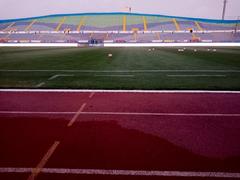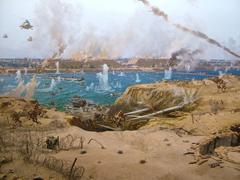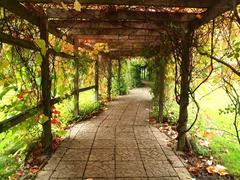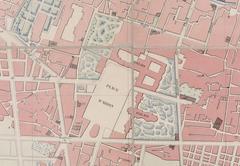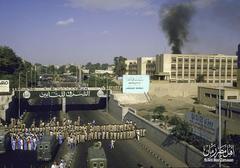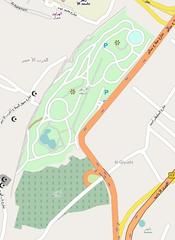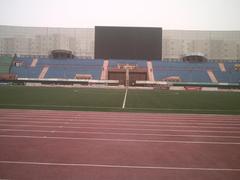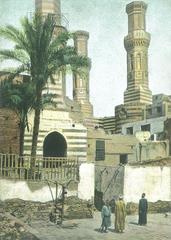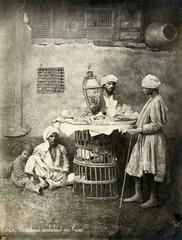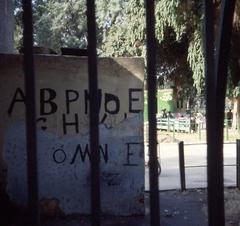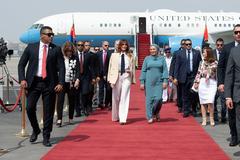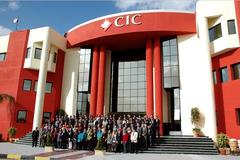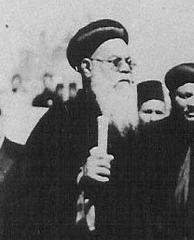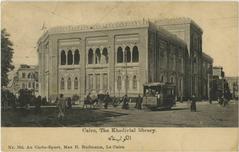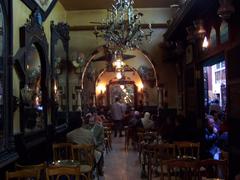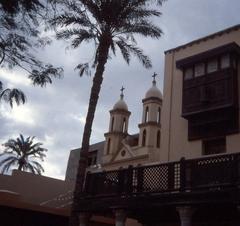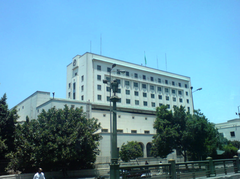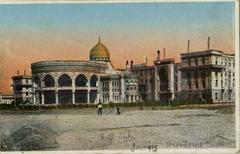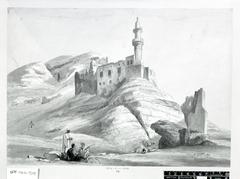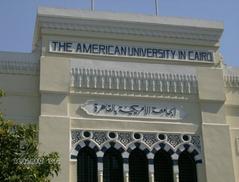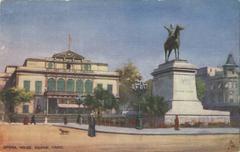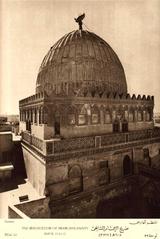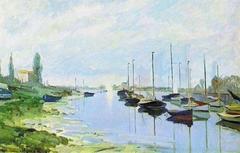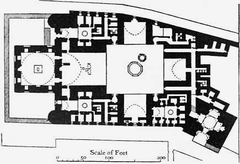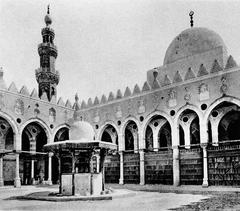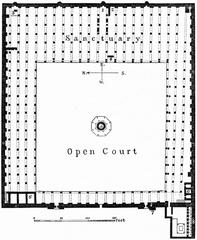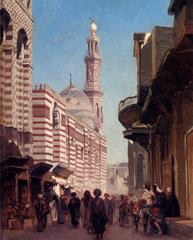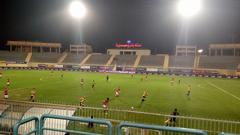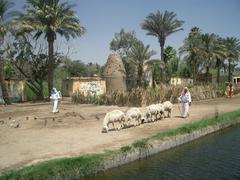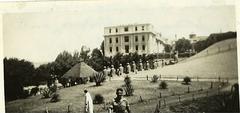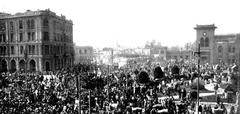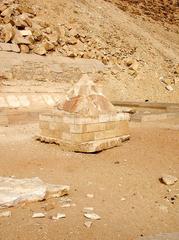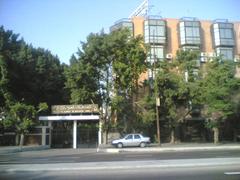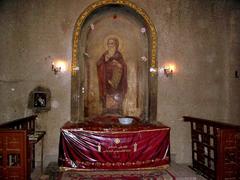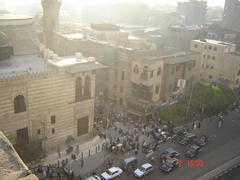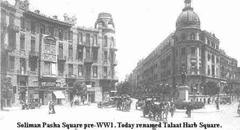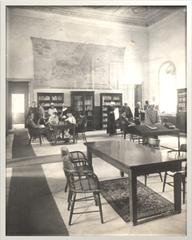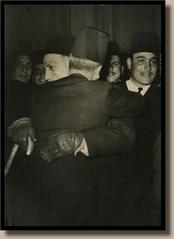The Royal Carriages Museum Cairo: Visiting Hours, Tickets, and Visitor Guide
Date: 14/06/2025
Introduction
The Royal Carriages Museum in Cairo is a singular testament to Egypt’s regal history, offering a rare look into the opulence, craftsmanship, and ceremonial traditions of the country’s monarchy from the 19th to the mid-20th century. Located in the historic Boulaq district, this museum houses one of the most complete collections of royal carriages worldwide, tracing the evolution of Egypt’s royal transport and reflecting its diplomatic and cultural exchanges with Europe. Whether you are a history lover, art enthusiast, or a curious traveler, this guide provides a detailed overview of the museum’s history, collections, visiting information, and practical travel tips to help you make the most of your visit.
Historical Background
Origins and Establishment
Established during the reign of Khedive Ismail (1863–1879), the museum was originally known as the Khedivial Carriages Service. Inspired by European royal customs, especially those in France, Khedive Ismail created this institution to showcase and preserve royal carriages and equestrian equipment that were emblematic of the Muhammad Ali Dynasty’s prestige. The Boulaq building was purpose-built for this collection, making it one of the earliest institutions of its kind globally (Landioustravel; Egyptian Gazette). In 1922, King Fouad I renamed it the “Royal Stables Department (Royal Mews),” reflecting its expanded role in the royal household.
Transformation into a Museum
Following the 1952 revolution that ended Egypt’s monarchy, the royal carriages transitioned from symbols of royal authority to treasured historical artifacts. The building was converted into a public museum and officially opened its doors in 1983. Today, it stands as the only museum of its kind in the Middle East and one of just five worldwide that are dedicated to royal carriages (Egyptian Gazette).
Restoration and Modern Era
The museum underwent closure in 2001 for extensive renovations, which resumed in earnest in 2017. After years of careful restoration, the Royal Carriages Museum re-opened in 2022, blending modern conservation techniques with the preservation of its historic architecture. The updated facilities now include enhanced exhibition spaces, accessibility features, and interactive elements for a richer visitor experience (Landioustravel).
The Collection: A Chronicle of Royal Egypt
Carriages and Diplomatic Gifts
The museum’s collection, spanning the reigns of Khedive Ismail through King Farouk, comprises over 70 royal carriages, many of which were diplomatic gifts from European monarchs. These carriages were used in royal weddings, state ceremonies, and diplomatic receptions, symbolizing Egypt’s international alliances and aspirations for modernity (Egyptian Gazette; Flying Carpet Tours).
The Alay Carriage
The museum’s most celebrated piece is the Alay Carriage, presented to Khedive Ismail by Emperor Napoleon III and Empress Eugénie for the 1869 Suez Canal inauguration. This ornate carriage, adorned with royal insignia and designed for grand state occasions, was drawn by nine horses and accompanied by a lavish retinue. It was later used in events like the inauguration of the Egyptian Parliament (1942) and King Farouk’s wedding (1938) (Landioustravel).
Other Notable Carriages
- Tonneau Carriage: Used by King Fouad for hunting and garden excursions.
- Coupé Carriage: Designed for princesses’ outings, typically driven by two coachmen.
- Pannier Carriage: Lightweight, made for young princesses.
- Caravan Carriage: Large, zinc-plated carriage from England used for transporting supplies (Landioustravel).
Accessories and Royal Artifacts
The museum also features an array of horse saddles, riding gear, coachmen’s uniforms, and royal accessories such as a golden donkey-shaped brooch and animal-motif cufflinks. Life-size oil portraits of royal family members and early royal automobiles, including Rolls-Royce and Cadillac models, further enrich the narrative of changing royal lifestyles (Egyptian Gazette; Flying Carpet Tours).
Museum Layout and Visitor Experience
Location and Setting
The Royal Carriages Museum is situated in Cairo’s Boulaq district, close to other major landmarks such as the Egyptian Museum and the Saladin Citadel, making it a convenient stop for cultural travelers (arabmls.org; mapcarta.com).
Galleries and Exhibits
- Ceremonial Carriage Hall: Houses the most ornate vehicles used in state occasions.
- Everyday Carriages Hall: Features practical vehicles for daily royal use.
- Royal Automobiles Hall: Showcases early 20th-century luxury cars.
- Accessories and Attire Gallery: Displays uniforms, whips, lamps, and riding gear.
- Restoration Workshop Viewing Area: Visitors can observe ongoing conservation work through glass walls.
- Interactive and Multimedia Displays: Digital screens and kiosks offer virtual tours and documentaries in several languages.
Accessibility
The museum is fully wheelchair accessible, with ramps, elevators, and tactile exhibits for visually impaired visitors. Trained staff are available to assist those with special needs, and service animals are welcome.
Amenities
- Restrooms and gift shop located near the entrance.
- Café with seating overlooking a landscaped courtyard.
- Security measures including bag checks ensure visitor safety.
Guided Tours and Special Events
Guided tours are available in Arabic, English, and French, and audio guides or app-based tours allow for self-guided exploration. The museum also hosts special exhibitions, carriage-driving demonstrations, and educational programs for families and school groups (gpsmycity.com).
Visiting Hours, Tickets, and Practical Information
- Opening Hours: Saturday to Thursday, 9:00 AM to 5:00 PM; closed on Fridays and select public holidays. Hours may vary during Ramadan or for special events—always check the official website or contact the museum before your visit.
- Tickets: Entry is affordably priced, typically around 60 EGP for adults, with discounts for students, children, and seniors. Tickets can be purchased at the entrance or online where available.
- Photography: Permitted in most areas, but flash and tripods are not allowed to protect the artifacts. Always confirm current policies at the entrance (intrepidscout.com).
- Transport: The museum is easily accessible by taxi, ride-sharing services, or public transport from downtown Cairo. Limited parking is available nearby.
- Dress Code: Modest attire is recommended in keeping with local customs.
Highlights and Thematic Galleries
- Hadiya (Gift) Gallery: Diplomatic carriages received as gifts from foreign monarchs.
- Tashrifa (Procession) Gallery: Carriages used in royal processions.
- Hussaan (Horse) Gallery: Showcasing horse equipment and saddles.
- Markaba al-Rasmiya (Official Carriage) Gallery: Featuring key state and ceremonial vehicles (Sharm Club).
Educational and Interpretive Value
The museum goes beyond displaying carriages; it offers an immersive look at the protocols, social hierarchies, and modernization of Egypt during the royal era. Through interpretive panels, multimedia exhibits, and engaging guided tours, visitors gain insight into how these carriages played pivotal roles in statecraft, diplomacy, and daily royal life (ETB Tours Egypt; Property Finder).
Nearby Attractions
Consider combining your museum visit with other major Cairo sites such as:
- Egyptian Museum
- Saladin Citadel
- Khan El-Khalili Bazaar
- Abdeen Palace Museum
These attractions offer a comprehensive understanding of Cairo’s royal and cultural legacy (mapcarta.com).
Frequently Asked Questions (FAQ)
Q: What are the Royal Carriages Museum visiting hours?
A: Saturday to Thursday, 9:00 AM to 5:00 PM. Closed on Fridays and some public holidays.
Q: How much are tickets?
A: About 60 EGP for adults, with discounts for students, children, and seniors.
Q: Are guided tours available?
A: Yes, in Arabic, English, and French. Audio guides and app-based self-tours are also offered.
Q: Is the museum accessible to visitors with disabilities?
A: Yes, with ramps, elevators, tactile exhibits, and trained staff support.
Q: Can I take photos inside?
A: Photography is generally allowed without flash or tripods. Confirm on arrival.
Q: Are there any special events or temporary exhibitions?
A: Yes, check the official website for up-to-date information on events and exhibitions.
Tips for Your Visit
- Visit on weekday mornings for a quieter experience.
- Allow 1.5 to 2 hours to explore thoroughly.
- Wear comfortable shoes—some walking required.
- Bring a camera but avoid flash photography.
- Consider hiring a guide for deeper insights.
Conclusion
The Royal Carriages Museum in Cairo offers an unparalleled journey through Egypt’s royal heritage, illuminating the grandeur, artistry, and diplomatic ties that shaped the nation’s modern era. With its meticulously curated collection, accessible amenities, and engaging programming, the museum is an essential stop for anyone eager to experience the splendor of Egypt’s monarchy and enrich their understanding of the country’s historical transformations. Plan your visit today, and immerse yourself in a world where history and craftsmanship collide.
For updates, travel tips, and personalized museum experiences, download the Audiala app and follow our social media channels. Enhance your exploration of Cairo’s royal legacy and make the most of your cultural adventure.
Sources and Further Reading
- Landioustravel
- Egyptian Gazette
- Flying Carpet Tours
- Property Finder
- AUC Egypt
- Egypt Travel Blog
- Sharm Club
- arabmls.org
- mapcarta.com
- gpsmycity.com
- intrepidscout.com
- ETB Tours Egypt
